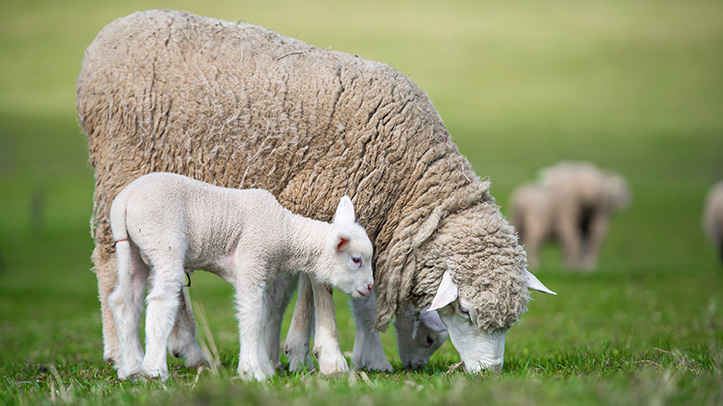Animal and Plant Health Agency (APHA) data shows that clostridial diseases consistently rank among the most frequent sheep submission diagnoses, prompting vets to remind farmers of the importance of timely vaccination to avoid such losses.
With UK sheep prices currently up 25% on the five-year average, losing just one or two lambs to clostridial or Pasteurella infections could offset the cost of vaccination, said Vet Charlie Parker from Oakhill Vets in Lancashire.
“All lambs are at risk from clostridia since the bacteria are naturally present in soil, the environment, and the intestinal tract,” explains Mr Parker. “Outbreaks tend to occur when animals are stressed by changes in weather, nutrition, parasites, or if they suffer a puncture wound, which gives the bacteria a route in.
“It’s not the bacteria itself that causes death, but the spores that multiply and produce toxins when ingested,” he added. “The symptoms and disease outcome will depend on the type of clostridial bacteria involved.”
Clinical signs of clostridial diseases, such as pulpy kidney and lamb dysentery, are often sudden and severe, with dead lambs being the most common outcome. Other signs may include a high temperature, depression, collapse, stiffness, convulsions, scouring, and abdominal pain.
Mr Parker finds the high prevalence of clostridial disease and pasteurellosis disheartening when effective vaccines are available. He reminds farmers that while vaccinating ewes with Heptavac P Plus provides passive immunity through colostrum, this protection wanes after about three weeks – leaving lambs vulnerable unless vaccinated.
“Vaccinating lambs at the right time is critical,” stressed Mr Parker. “Farmers using Heptavac P Plus in their ewes should follow up with a primary course for replacement ewe lambs from three weeks of age to maintain protection.
“For finishing lambs, consider using Ovivac P Plus, even if these animals are intended for slaughter this year. This vaccine protects lambs against four key clostridial pathogens and aids in the control of pasteurellosis caused by M. haemolytica and B. trehalosi.
“The late summer and autumn are particularly risky times for valuable growing lambs to succumb to these pathogens. Vaccination is one of the most cost-effective measures farmers can take to safeguard flock health and protect margins.”
MSD Animal Health veterinary adviser Dr Kat Baxter Smith said the unpredictable nature of stress-related triggers makes vaccination essential.
“We’ve seen cases where a shift from mild to cold and wet weather has triggered an outbreak practically overnight,” she explained. “Farmers need to be proactive rather than reactive when it comes to disease prevention.”
She also highlights the importance of completing the full vaccination schedule.
“It’s not enough to give one shot and assume the job is done. A primary course followed by a booster is essential for full protection,” she said.
“Skipping the booster leaves lambs vulnerable, especially during high-risk periods such as weaning.”
Dr Baxter Smith added that while clostridial diseases are often sudden and severe, they are among the easiest to prevent through vaccination.
“Clostridial disease can strike quickly, and once symptoms appear, treatment options are limited,” she said. “Vaccination gives farmers peace of mind and reduces the risk of costly losses.”


